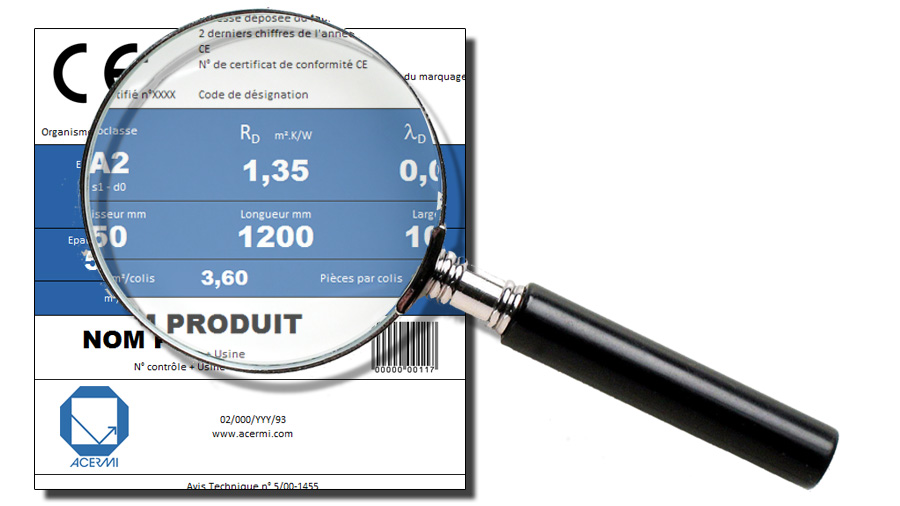2019-12-19
Use the ACERMI correspondence table for sizing

- ACERMI certification certifies a product's settling rating (SH) and thermal conductivity to derive its useful thermal resistance after settling. To achieve a given thermal resistance, ACERMI certificates specify the thickness, and therefore the density of product to be installed, known as "coverage".
- At a worksite, installers can refer to the items listed on the ACERMI certificate. By knowing the mass of a bag of insulation, and the surface area to be insulated, they can calculate the number of bags needed to achieve the desired performance.
- This data (product reference number, insulated surface area, thickness installed, surface density, number of bags used) must be entered by the installation company on a worksite sheet, which is the key element of the contractual agreement between the project owner and installer.
Close-up of a certificate and how to read the manufacturer's label
Example of a "Loose-fill cotton wool products" reference certificate
By blow-in of product for unused roof spaces
Certified thermal conductivity: λD = 0.040 W/(m.K)
Density value: 30 - 40 kg/m3

|
Thermal resistance RTH |
Minimum thickness | Thickness after settling |
Minimum number of bags for 100 m² |
|---|---|---|---|
| m².K/W | mm | mm | 15.0 kg |
| 7.00 | 350 | 280 | 70 |
For thermal resistance 7.00 m².K/W (R=7), the minimum thickness of the product after blow-in must be 350 mm so that the thickness of the cotton wool does not fall below 280 mm after settling. The installer must then use at least 70 bags, each weighing 15 kg, for 100 m² of surface area, with an air pump setting at a minimum density of about 30 kg/m3.
If the machine is set to a higher density value, more bags are required (about 94 when set to 40 kg/m3).




